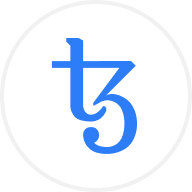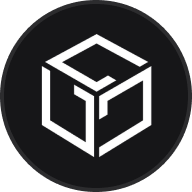Sandbox is a decentralized virtual world on the Ethereum blockchain where you can create, share, and monetize voxel assets and games. The Sandbox is a play-to-earn (P2E) Ethereum-based platform whose creators aim to create an immersive metaverse experience without a centralized authority.
Traditional voxel-based virtual world-building games like Minecraft are centralized games where users have no ownership over their creations or the gameplay. Sandbox solves this issue by allowing players to build and monetize gaming experiences on the Ethereum blockchain.
Unlike traditional games where in-game assets exist on the respective company's server, every object in the Sandbox metaverse is a freely tradable non-fungible token (NFT) on the Ethereum blockchain giving a user complete ownership of the in-game item. Creators within The Sandbox thus have true ownership of their creations via these NFTs. In addition, they are rewarded for their participation with SAND, the network's utility token.
Since The Sandbox ecosystem is powered by the Ethereum blockchain, all smart contract execution, NFT transfers, cryptocurrency transactions, and record-keeping are facilitated by the Ethereum network. This is done via three core products that fuel these functions to help users create their virtual world. They are VoxEdit, Marketplace, and Game Maker.
VoxEdit is a free-to-use voxel modeling package that allows users to create and animate 3D objects. These objects can then be exported into The Sandbox marketplace as in-game ASSETS. The Marketplace is a web-based store that connects buyers and sellers trading Asset NFTs. It allows users to upload, publish and sell their ASSETS as ERC-721 and ERC-1155 tokens.
Lastly, Game Maker enables users to add gameplay mechanics to their voxel assets via visual scripting nodes, allowing users to create an engaging game experience on their purchased plot of LAND. Users can also use Game Maker to place voxel Assets in their Sandbox LAND. LAND can also host contests and events, monetize assets, play and create games, vote in The Sandbox metaverse's governance, and stake SAND tokens. There are a maximum of 166,464 LANDS available.
SAND: The Sandbox's native token
SAND is an ERC-20 token used for transactions within the platform, amongst other things. Players spend SAND to access and play games, buy equipment, and customize their avatars. SAND can also be used to purchase assets and LAND.
Another native token of The Sandbox metaverse is ASSET tokens which can be bought and sold with SAND. Users can create and sell ASSET tokens on the Marketplace as NFTs representing in-game items.
SAND also functions as a governance token. Holders can vote on decisions regarding the future of The Sandbox through the platform's decentralized autonomous organization (DAO).
SAND can also be staked, which allows for earning passive revenues. In addition, staked SAND tokens can also earn yield in the form of valuable Gems and Catalysts, which are used for ASSET creation.
SAND price and tokenomics
SAND is a deflationary token with a finite supply of 3 billion. Of the total supply, 360 million SAND were allocated to the launchpad sale, 17.8 percent were kept for the seed sale round, and 4 percent of SAND tokens were distributed during a strategic sale in July 2020.
From the remaining SAND supply, 12 percent of tokens were given to the Sandbox Foundation, 25.82 percent was allocated for reserves, 19 percent of SAND tokens were distributed to the founders and team, and 10 percent of SAND tokens were paid to advisors.
The seed sale and strategic sale allocation have a 12-month cliff, after which 20 percent of tokens are unlocked every six months.
Revenue generated from The Sandbox is distributed across four stakeholders to ensure continued support to its ecosystem of players and creators. These tokens are distributed to the foundation pool, the staking pool, the company treasury, and the company reserve.
About the founders
The Sandbox project was founded in 2012 by Sébastien Borget, now COO of Sandbox, and CEO Arthur Madrid.
Built by Pixowl, a mobile game development company in San Francisco, Sandbox was initially launched as a 2D mobile game, which over 40 million people downloaded.
In January 2018, Sandbox decided to develop a 3D version of the game on Ethereum. In addition, the Sandbox team wanted to provide players 100 percent ownership over their in-game items and the ability to monetize their gameplay and assets. Later in August 2018, Animoca Brands, the leading blockchain game developer, acquired Pixowl.
To fund their vision, Sandbox raised $6.8 million in three token sales in 2019 and 2020. In addition, the company announced a $2 million grant for creators to create and publish voxel art on the Sandbox platform.


















